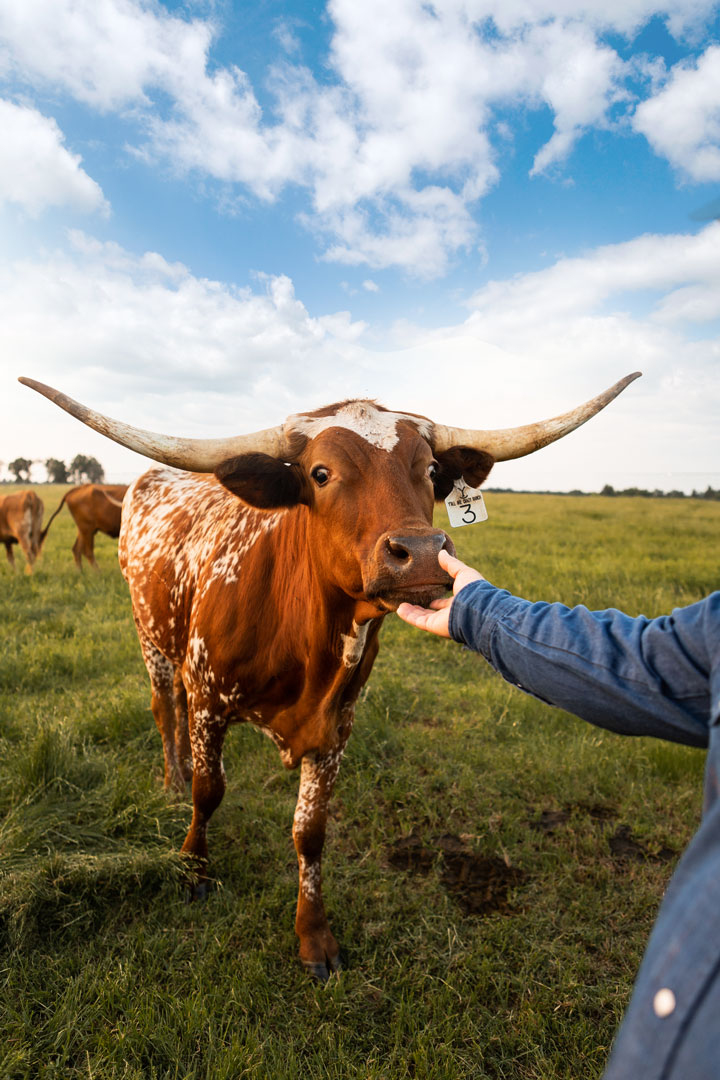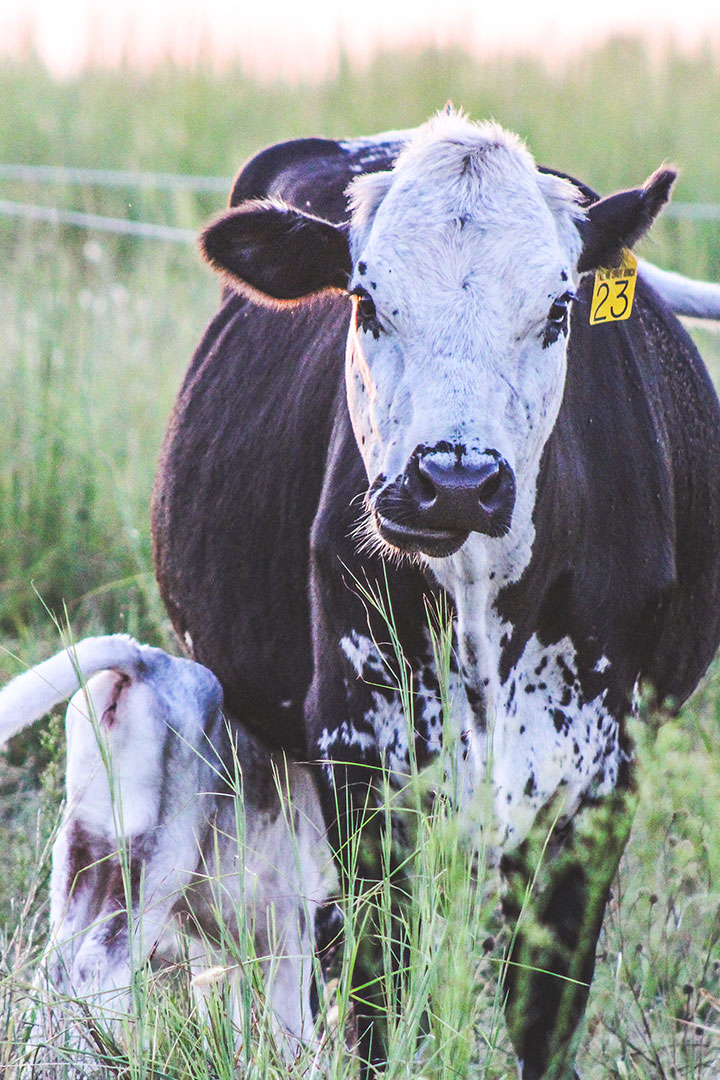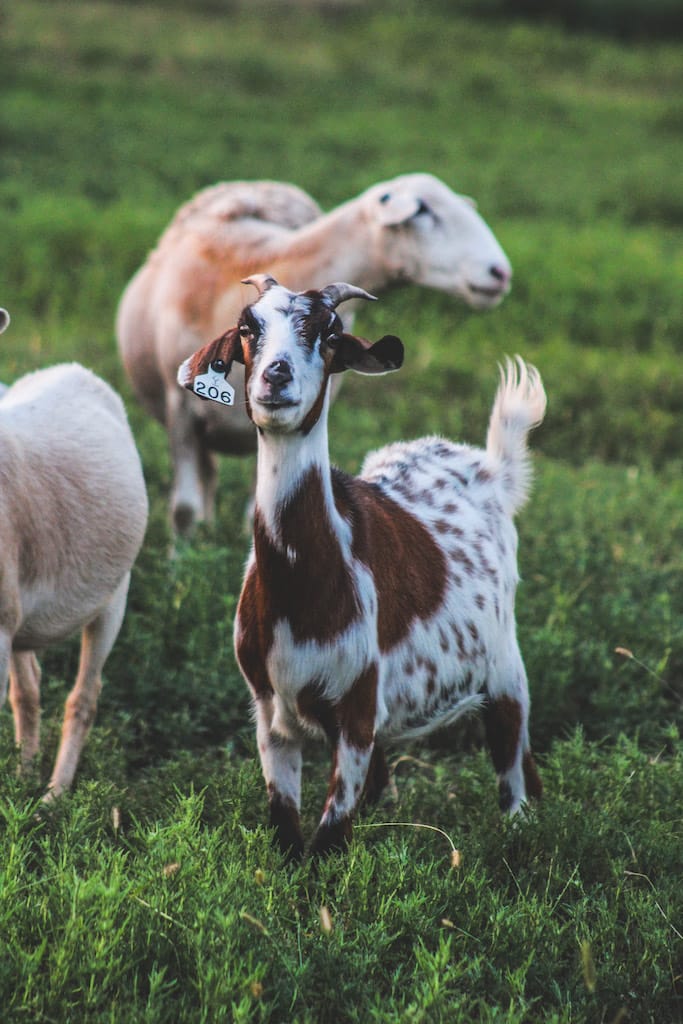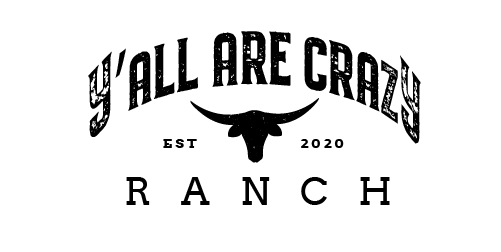How We Source Our Beef & Lamb



Knowing where your food comes from and how it’s raised is important.
As a Regenerative Ranch it’s important for us to select the healthiest of animals to join our herd. We want our animals to grow and thrive with as little man-made additives as possible. Most cattle in the big production facilities are raised in feed lots where there is little to no grass, and they’re fed grain so they get as fat as possible. They’re cooped up with one another so they have to have lots of vaccines and medications to fight off disease and worms. The food they eat is treated with chemicals as well. Without man-made additives and interventions, these cattle wouldn’t live very long due to the unnatural and unhealthy environment they’re in. In contrast, on our ranch, we don’t vaccinate or de-worm our animals, or use other chemicals such as fly sprays, etc. If we have an animal that needs medical attention, we will vaccinate them or give them medication as necessary to keep them alive and healthy. However, once they’re healed we will be looking to sell that animal out of our herd so we can continue to build the healthiest, strongest, most resilient herd we can!
When you have a Regenerative Ranch that operates this way, not just any animal can adjust and make it, especially if they’ve come from an environment with a lot of additives and interventions, or from an environment in a different climate/region. For example, if we purchased a cow from Pennsylvania and brought it to Oklahoma, it likely wouldn’t do very well for a while because everything here is so different. The climate is much hotter in Oklahoma, the grass is not the same as Pennsylvania, so because of things like that the cow would struggle. When a cow struggles, she’ll typically lose weight, not calve, need medicines or supplementation, etc. This isn’t good for the animal or for the rancher. Knowing this, it was important for us to source our herd from local ranches so that the transition wouldn’t be a shock to the animal.
We started our cattle herd from a few different ranches in Oklahoma and Texas.
Our first purchase of cows came from a ranch located in Sallisaw, Ok called Lone Wolf Ranch. Linda Ragains and her husband Lee started the ranch in 1979. They’ve raised quality longhorn cattle for decades and showed to have high quality genetics and care for their product. Once we got used to the longhorns we decided we wanted to grow our operation and add to our herd.
We found our next bunch on a farm in Paris, Texas which is in a different state, but is only 3 ½ hours from our ranch in Chandler, Ok. These cows were super healthy and most already had big, pretty horns. They have transitioned to our ranch very well over the past year!
Our ranch continued to grow and we acquired 160 more acres!
With the new ground to graze, we decided to purchase more cows. The last bunch we purchased was from a ranch in Guthrie, Ok which is only about 45 minutes from our ranch. This was a no brainer purchase for us and gave us the numbers we needed to really start growing.
As we continued to learn and grow in our Regenerative Ranching knowledge we made the decision to transition from Longhorn cattle to Southpoll cattle. We believe that the Southpoll breed will suit us better due to their ability to grow on grass, withstand the Oklahoma heat, and maintain a shorter and stalkier body composition. In thinking through the best way to accomplish this, we decided to source a high quality Southpoll bull to serve as our herd sire and use our existing longhorn cows to breed through. This means their calves will be half Southpoll and half Longhorn but each generation thereafter will be more and more Southpoll. We believe that another benefit to growing this way is that we will end up with a very healthy and thriving herd! The Longhorn breed is known for its resiliency and overall toughness in surviving, so breeding those qualities with our Southpoll bull will create a great herd! We found our registered Southpoll bull from a ranch in Bluejacket, Ok which was only a couple hours away.
Having put together our cattle herd we wanted to start building a sheep and goat herd in the same manner. We started with sheep and knew we wanted to build a parasite resistant herd. This led us to the Katahdin and Dorper hair sheep breeds which we felt gave us the best chance of accomplishing our goal. The first group we bought came from a ranch about 45 minutes from us in Glencoe, Ok. The second group came from a ranch in Agra, Ok which was only about 10 miles from us! This was a great find where we purchased about 100 sheep.
For our goats, we decided to look for a Spanish breed. We not only wanted a breed that would provide great meat but we wanted them to be able to thrive on the land and help manage the brush and weeds with as little intervention from us as possible. Goats can be a challenge to raise so we definitely wanted to source from a ranch that was aligned with our goals and beliefs. We found the Howard Ranch in Mulhall, Ok which is only an hour from us and they have raised Spanish goats for decades! We purchased about 20 goats to start with and want to grow our numbers from there.
Our goal moving forward is to only sell meat that we have grown on our soil.
Except for occasionally having to bring in a bull, ram, or billy from a different ranch, we want to build our herd from within! Once you have great genetics that thrive in a Regenerative Ranching operation, it is imperative to guard that by keeping less desirable genetics out. As the years go by and the herd improves, we’ll have animals that will need less and less vaccinations, medications, and supplementation. Our ultimate goal is to build the healthiest, most self-sustaining ecosystem we can which will enable us to provide our customers with the most nutrient dense and healthy food possible.
